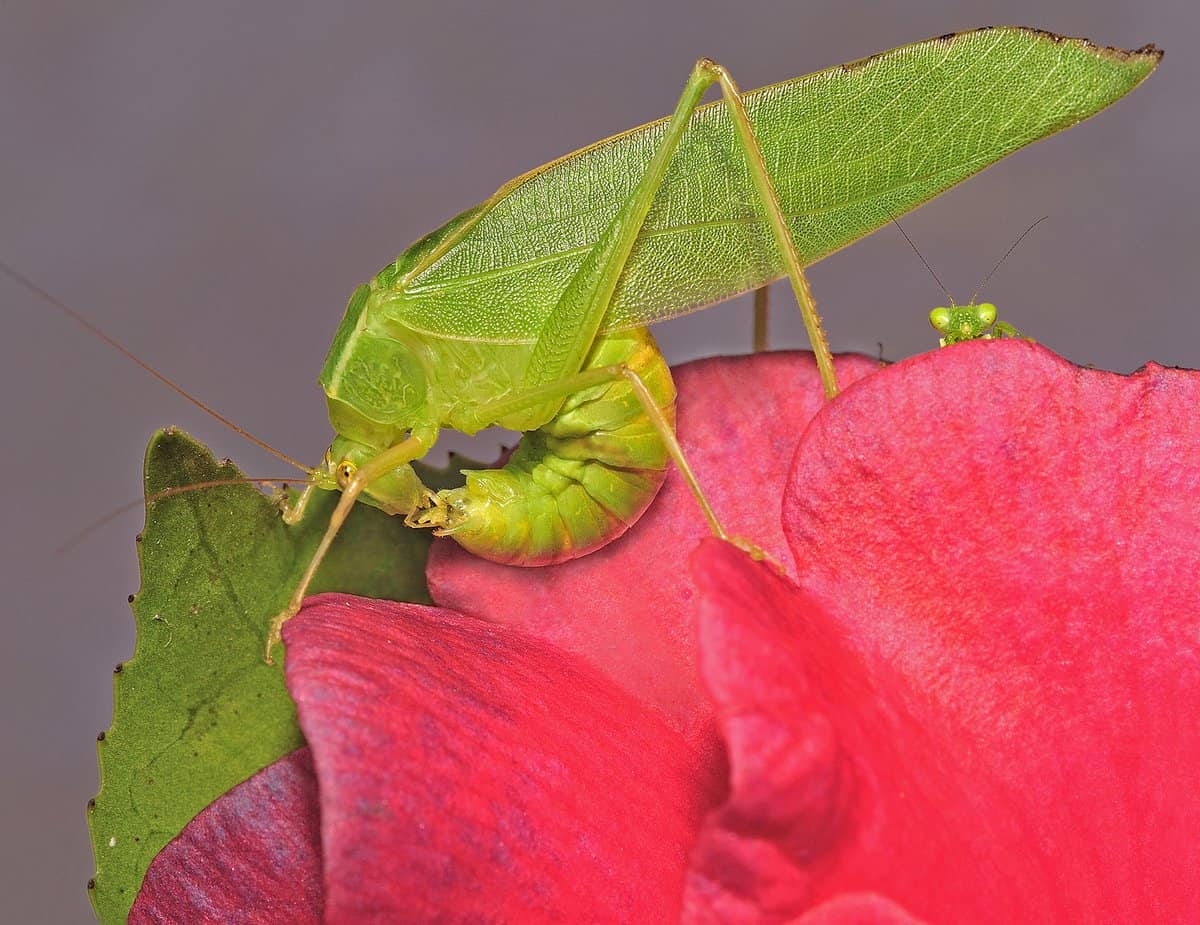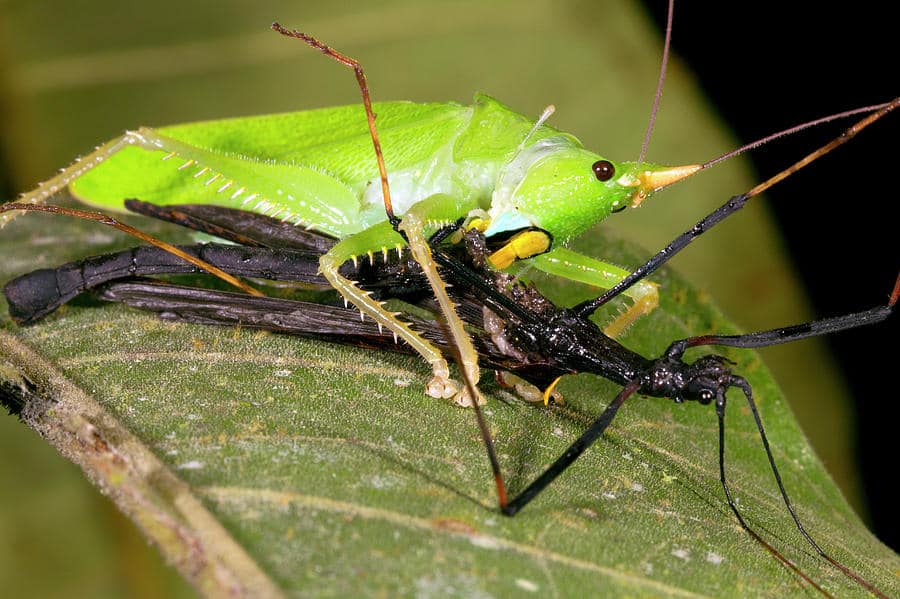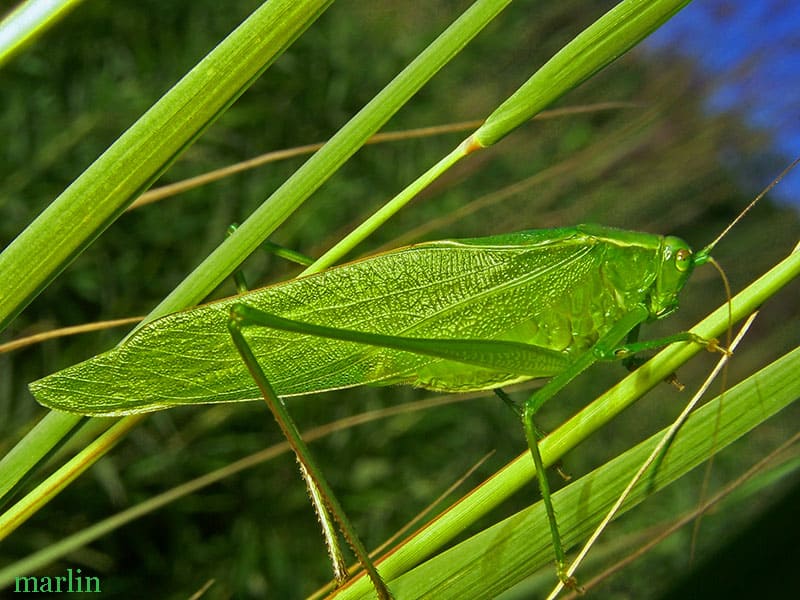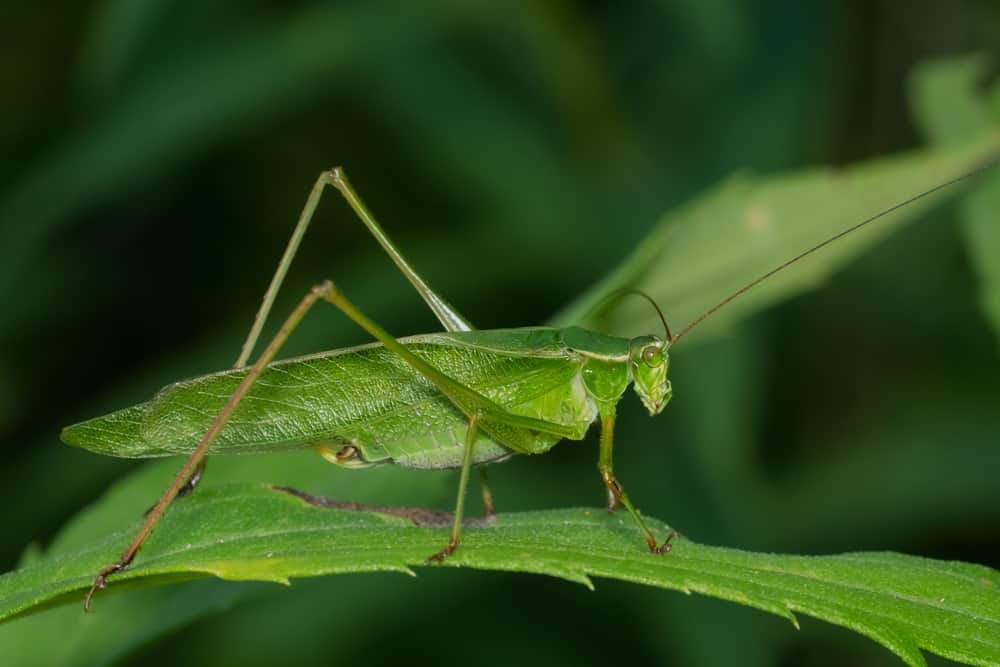The name Katydid comes from the sound of their front wings rubbing together; it sounds like ka-ty-did. Whether you are considering getting a Katydid as a pet or are fascinated by them, you are here because you want to know: what do katydids eat?
Katydids are not very common, so if you are considering getting one as a pet, it might prove scary and confusing. But don’t worry, we will explain what katydids are, what they eat, and how to take care of them here.
What Are Katydids?
If you keep a Katydid as a pet or wish to own one, then you are one of the few who know about Katydids. Katydids are any insects under the family Tettigoniidae. They are sometimes called bush crickets or long-horned grasshoppers.
How Can You Identify A Katydid?
A Katydid looks similar and closely related to crickets and grasshoppers but can be differentiated with their long, thin antennae and thinner legs. There are over 8000 species of Katydids found worldwide except in Antarctica, and you can find one-third of them alone in the Amazon rainforest.
You should know that these insects are as small as their cousin, the grasshopper, but they vary in size. Katydids come in different lengths, from 0.2 inches to 4 inches. The smaller ones are often small due to their dry or stressful habitats.
What Is The Lifecycle Of Katydids?

Katydids have a life span of approximately one year, and only one generation of katydids is produced a year. Usually, Katydids mate during summer, so the eggs are laid towards the end of summer.
Female Katydids lay their eggs in the dirt beneath a plant or in holes that the insect has dug into plant stems. The mother dies in the first fall frost, but her eggs will survive winter in their protected location. Then, as spring is welcomed, the eggs hatch, and nymphs come forth.
The Nymph looks like the adults, but they have no wings. As they grow, they shed their outer skin before eventually becoming adults. While the eggs of a katydid can withstand cold weather, an adult katydid cannot, so dying because of the cold of autumn is normal.
How Do Katydids Hunt?
While they do not need to hunt for their vegetable-based meals, since a katydid is an omnivore, it has to hunt for its insect-based meals. As damaging as aphids can be, they are very slow, making them easy prey.
Tropical katydids are built a little differently than the ones we see around us. These katydids have spikes on their legs which they use to spear small insects, making it much easier to kill a smaller insect than an aphid.
Are Katydids Harmful?
People often wonder if Katydids are harmful or dangerous, and if you plan on getting it as a pet, that question is most likely on your mind. Katydids are in no way dangerous; they are very gentle insects that would cohabitate with their owners and other pets peacefully.
A katydid would only cause harm whenever it feels threatened. Healthline.com says that if a katydid bites or pinches you, there is no need to worry as they do not have any toxins.
Their bites are as painful as a mosquito bite, but if it hurts and gets swollen, all you have to do is apply an ice pack to it. Many perceive katydids as pests that would cause harm to their plants by eating them.
However, this is not true as a katydid has a minimal appetite, and if it eats your plants, the effect wouldn’t even be noticeable. Besides, you don’t have to worry about a large swarm attacking your plants as they are not social insects and often go solo.
What Do Katydids Eat?

As Omnivores, a katydid’s primary feeding sources are leaves and insects. Katydids live on plants, and they would only move down to the stem of a plant if there are no suitable leaves to munch on and would only eat the roots if there were no leaves available. Katydids also often serve as pest control because the insects they feed on cause economic damage to plants. The Aphids, for example, are small sap-sucking insects that serve as an excellent meal for katydids.
While katydids are not selective, they have their favorites, and some plants would always attract them, like the eucalyptus, angophora, bursaria, butterfly bush, acacia, flax lilies, hazel, oak, and bramble. However, a Katydid would not come near lavender, garlic, and chrysanthemums.
A katydid’s diet also depends on where they live. For example, species of katydids found in the tropical area would eat more insects and fewer leaves, while a katydid you find in your backyard would most likely eat more leaves.
Do Katydids Eat Fruit?
Katydids also feed on fruits, but they do not leave any damage in the process. In fact, after eating out of the pulp of the fruit, you’d barely notice because this insect has a small appetite.
If you wish to serve your katydid fruit, you could give it a small slice to begin with. Great sources of fruit for Katydids include apples, oranges, grapes, apricots, plums, and pears.
How Do Katydids Protect Themselves?
While Katydids hunt for food, they also serve as prey to some organisms of the wild. Animals like bats, birds, spiders, larger insects, lizards, monkeys, and rodents serve as predators of the Katydid.
To keep themselves alive, the katydids have different defense mechanisms set up in place to fight off predators. According to biomimicry.org, they can camouflage and mimic the colors and shapes of leaves to avoid attack by predators.
Also, the spikes on their legs are not only for hunting food but also to protect themselves from predators. They also produce a loud noise when threatened, which can startle the predator, giving it enough time to escape.
Some species of bats, as predators of Katydid, have learned to pick up on the mating call of their prey, making it supposedly easier to get them. Phys.org, however, mentions that katydids also have ears to pick up the echolocation calls of bats so they’d know when a predator is around.
How To Take Care Of A Pet Katydid

Katydids are not the typical type of pet, and if you are adopting one for the first time, you’d need an idea on how to care for your pet katydid, which is why we are here. Here are some tips you can pick up as you adopt your new pet.
The first step to caring for your Katydid is getting it a place to reside, ideally a tank. You would need a well-ventilated tank to prevent your pet from suffocating to death. You also want to keep the tank warm, around 22 degrees to 26 degrees Celsius.
You can do this by making use of a lightbulb. The bulb shouldn’t be an energy saver as it would not generate that much heat. Always keep a thermometer around to measure the tank’s temperature.
Another thing you want to do is spray the tank with water regularly to keep the tank moist and humid. Don’t forget to clean the tank at least once a week to prevent mold and fungi buildup.
Katydids are also very fragile insects, so when you want to pick them up, you have to be very careful so they don’t get hurt. Also, keep an eye on it while it is out of its tank as they are known jumpers and could jump away unexpectedly.
Feeding Your Katydid
When it comes to feeding your pet, you should leave stems and leaves in its tank only once a day as it would be big enough to last them for the day. Before serving them a meal for the day, take out any leftovers before giving your Katydid something fresh.
According to rnzih.org, some katydids love citrus trees, which can serve as an excellent treat for your pet katydid. As mentioned previously, Katydids also enjoy smaller insects. If you aren’t so sure your Katydid would eat an insect, you could place some aphids in its tank to try it.
Do not leave a water bowl in their tank, especially when a baby katydid is in there; it could fall into the water and drown. Usually, the spraying you do daily would leave enough water for them to drink.
Conclusion
Katydids are not only cute but also lovely and safe, and if you have any plans to adopt one, you should. Feeding a katydid is not an issue, and it is cost-effective, as the leaves from your backyard would be enough to keep your little friend full and happy.
I hope you found this article helpful, and please leave a comment if you have any tips or questions.
Key Takeaways
- Katydids have a lifecycle of around a year.
- Katydids eat leaves, insects, and fruit.
- Katydids are prey to animals such as birds and lizards so be sure to keep your pet Katydid away from their predators.
- Well-ventilated, warm tanks make a great environment for your pet Katydid.

Thank you. I saw a Katydid in my baby citrus
Plant; I also saw swallowtail butterflies leaving eggs and consequently, worms that eat the most tender leaves of the citrus plants.
I think the Katydids knows about these quarter of an in ch long worms and that is what they like about these plants.
I think I will let Nature take her course.